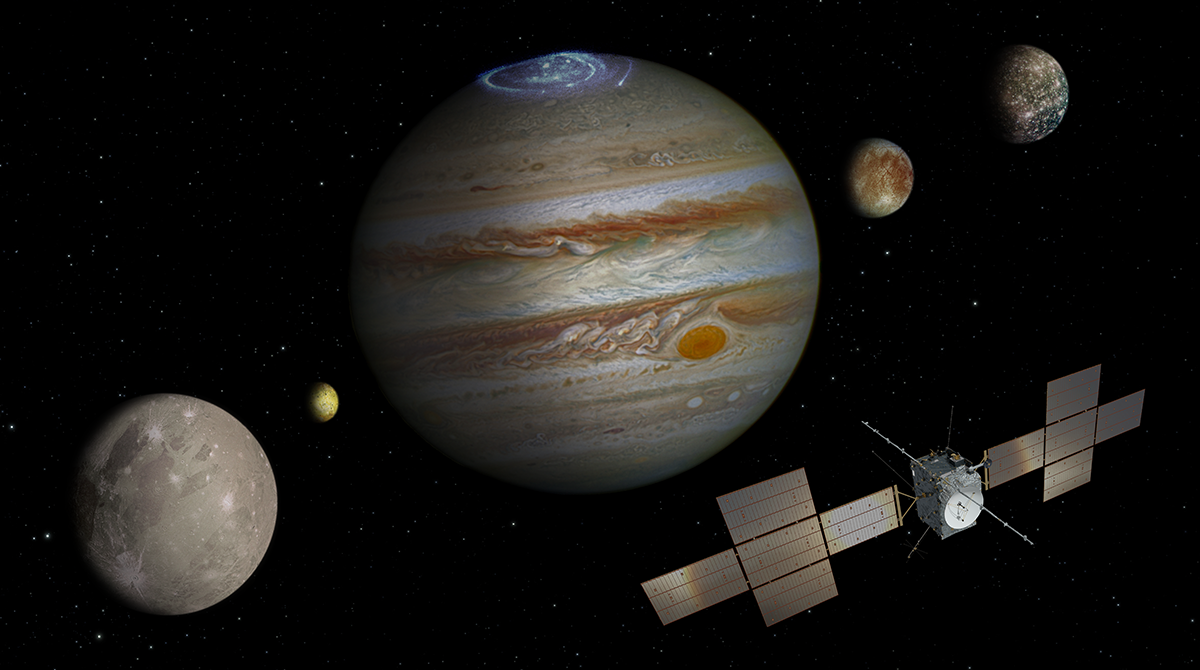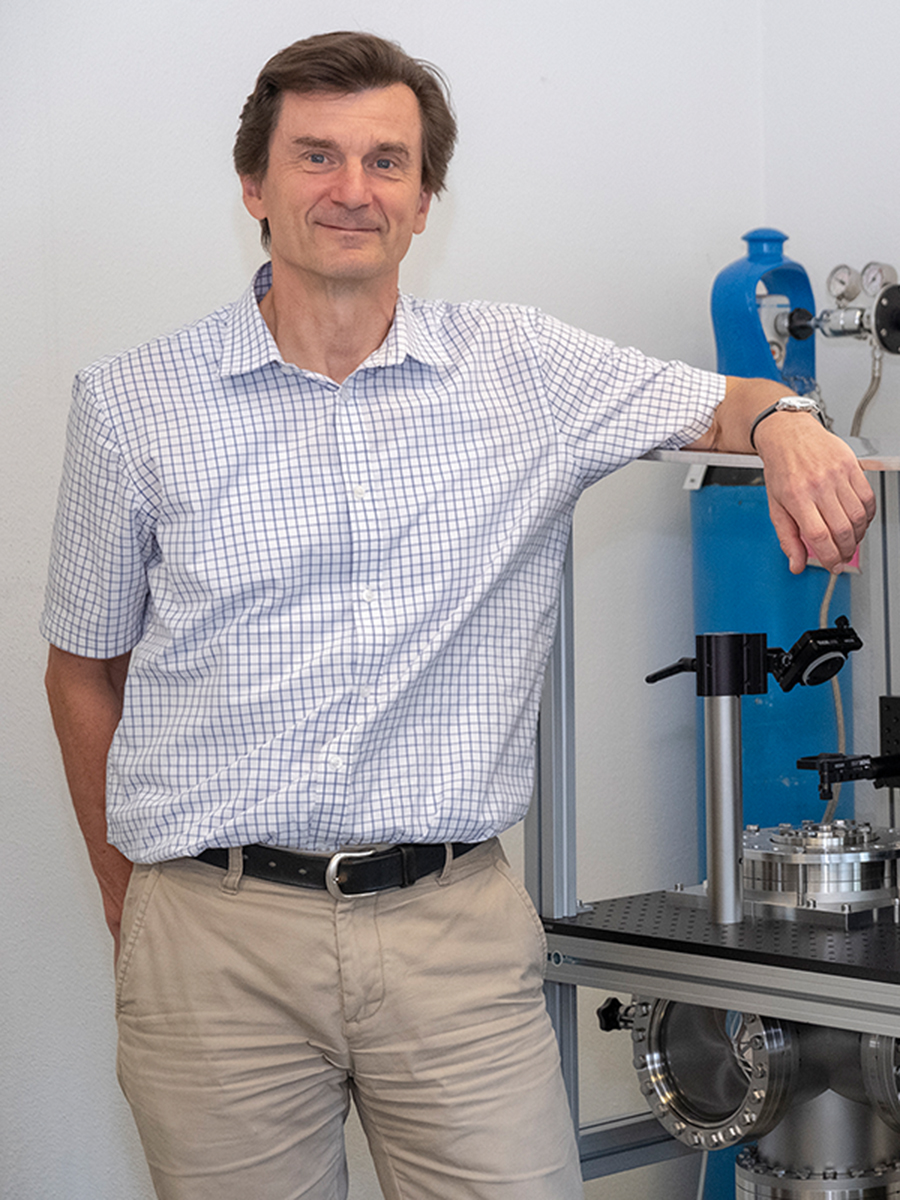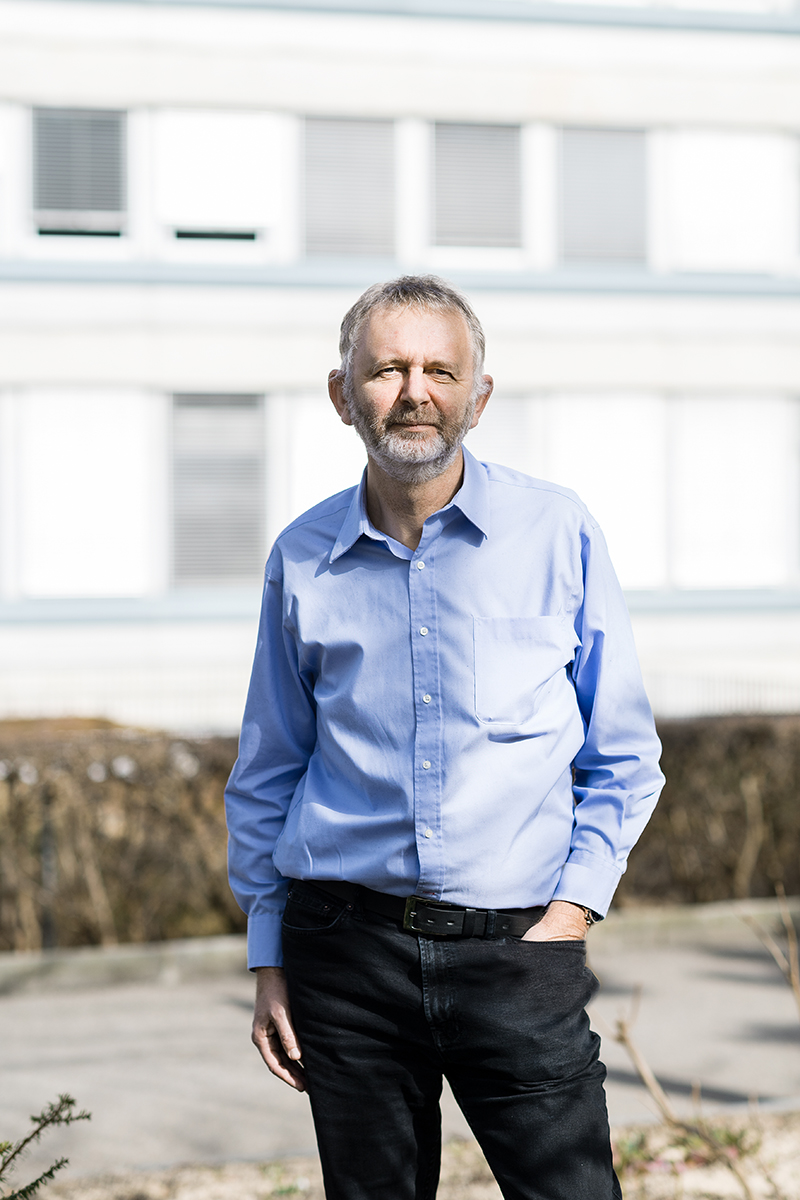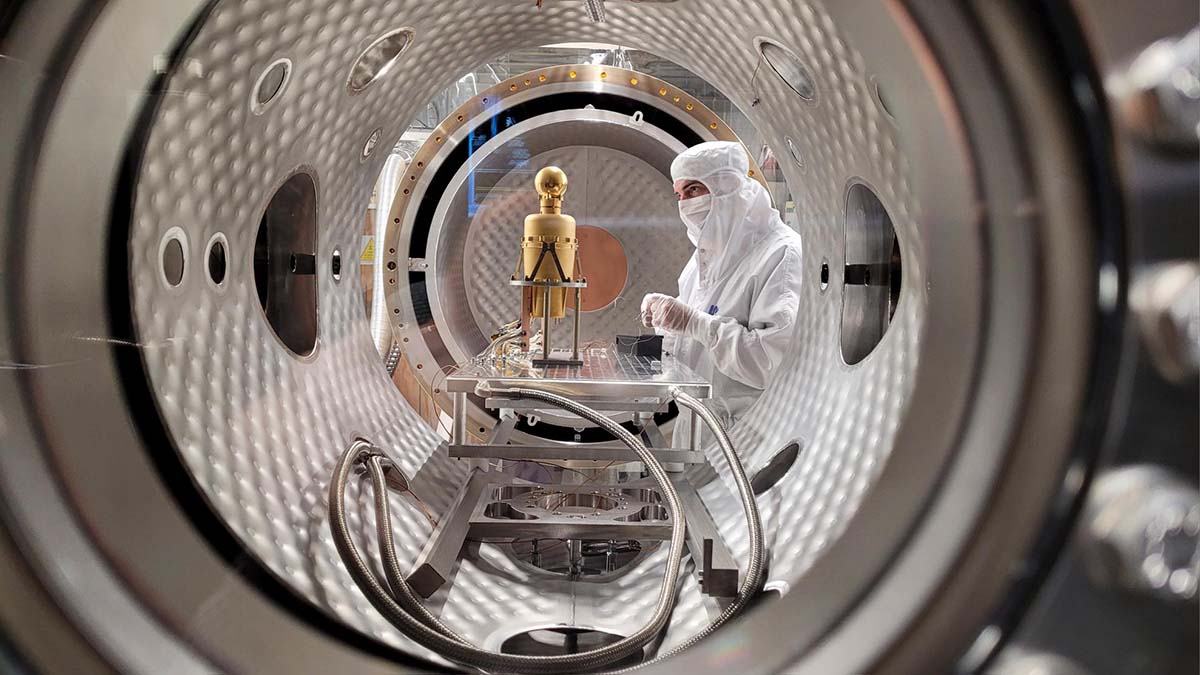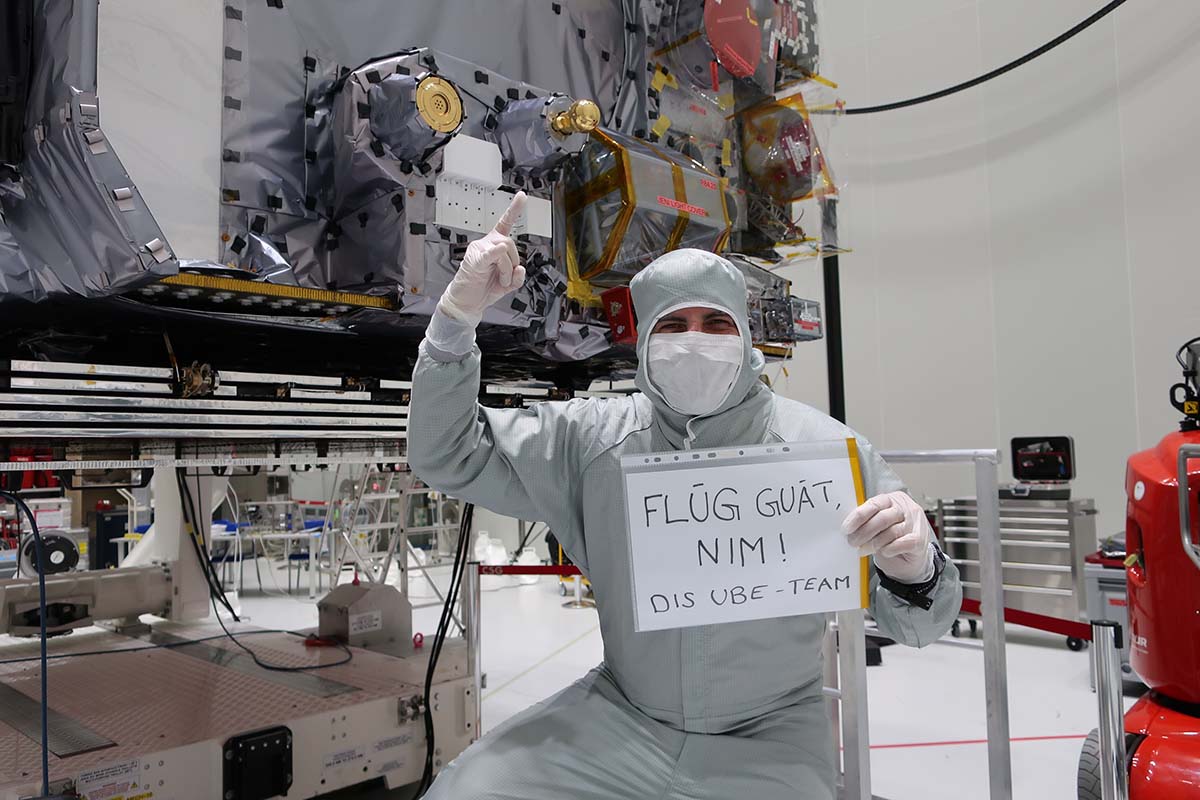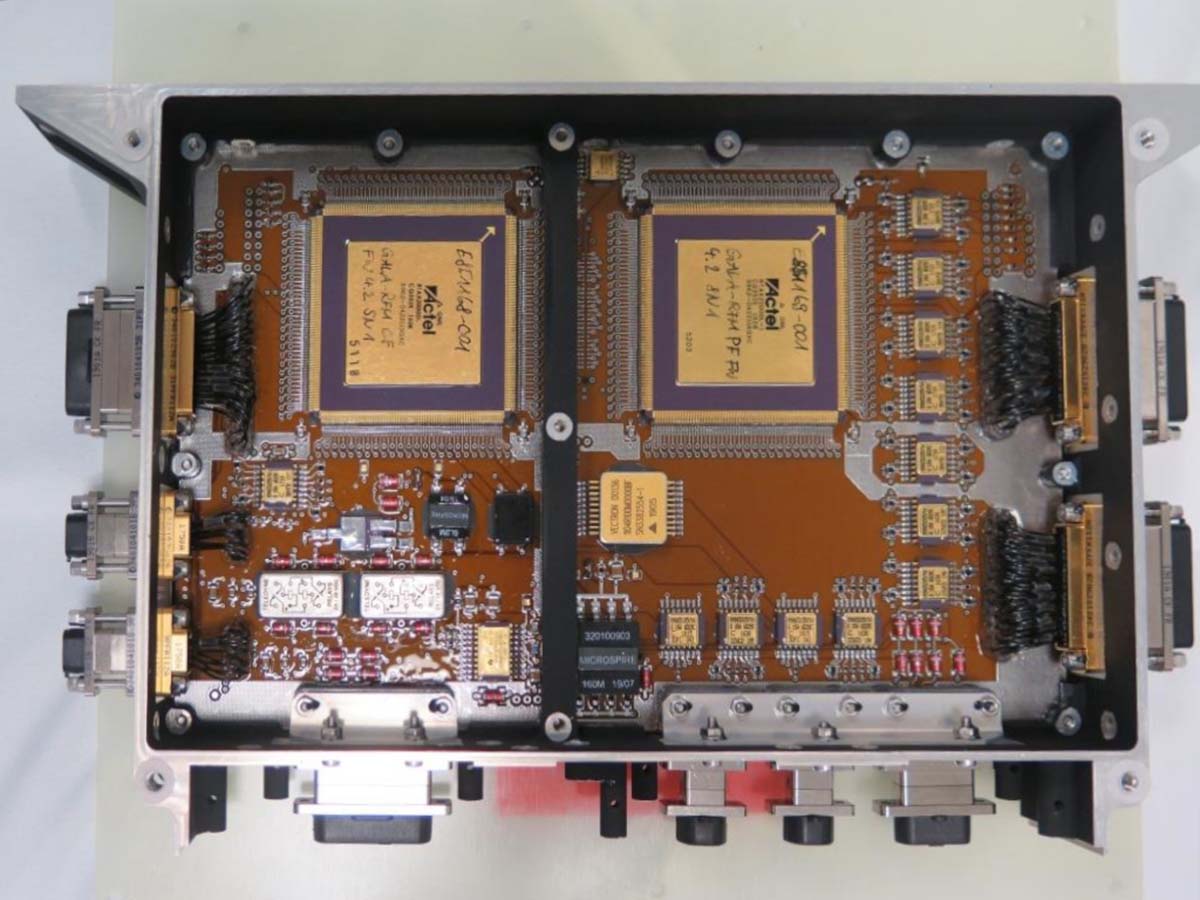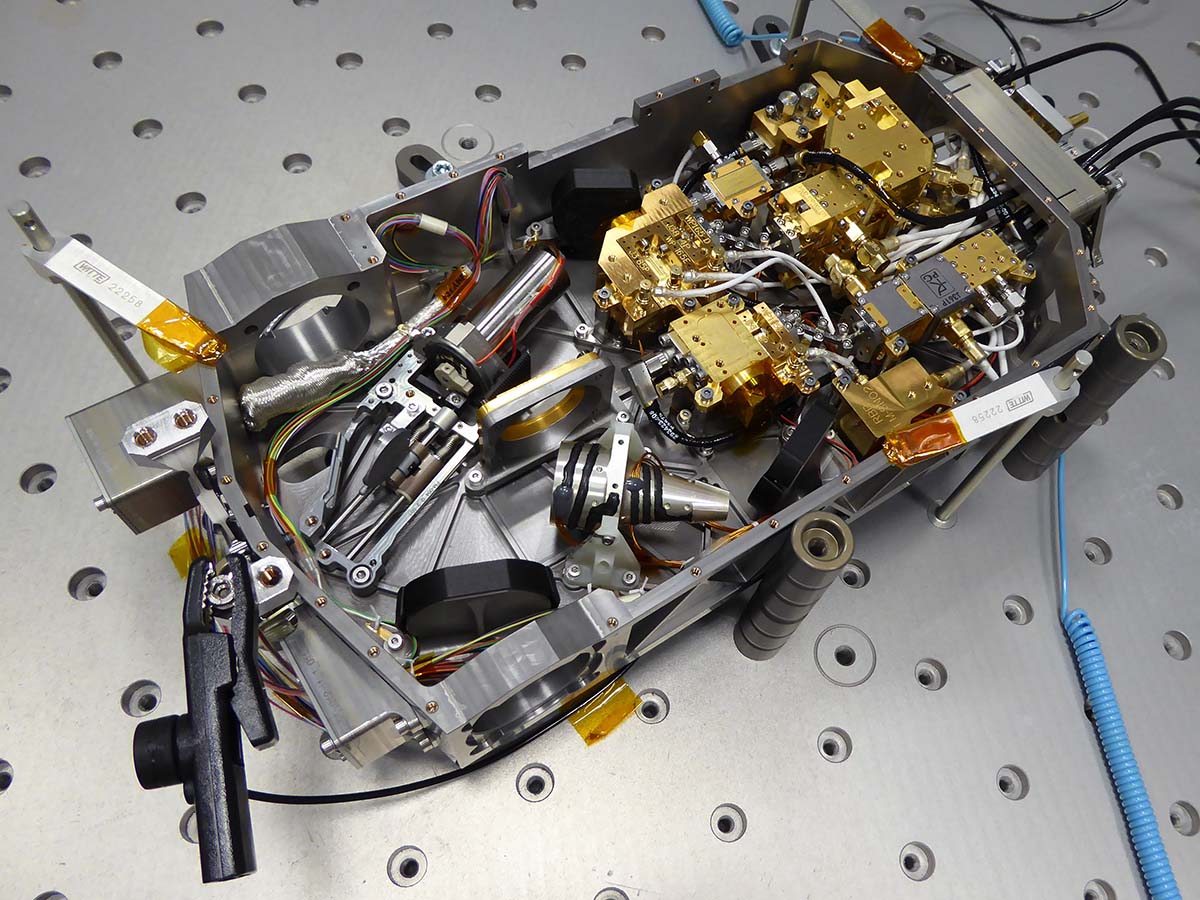The University of Bern is on board a mission to Jupiter
The European Space Agency ESA’s Juice space mission is scheduled to start its journey to Jupiter on April 13, 2023. Once arrived, one of the goals of Juice is to search for traces of life on three of Jupiter’s icy moons. The University of Bern is contributing the NIM mass spectrometer to the mission and is involved in two other instruments: the SWI Sub-millimeter Wave Instrument and the GALA Laser Altimeter.
The European Space Agency ESA’s Juice (Jupiter’s Icy Moons Explorer) space probe is scheduled to begin its journey to Jupiter on board an ARIANE 5 rocket launched from Europe’s Spaceport in Kourou, French Guiana, on Thursday, April 13, 2023 at 2:15 p.m. After a roughly eight-year journey, Juice will arrive at Jupiter to explore the largest planet in our solar system and three of its more than 80 moons. These are the icy dark worlds Ganymede, Callisto, and Europa, ocean worlds where the average surface temperature is below minus 140 degrees Celsius.
The Juice mission aims to answer fundamental questions about the formation of Jupiter and its moons – and it also involves the search for signs of life. Ten scientific instruments are on board Juice. The University of Bern is contributing the NIM mass spectrometer (which is part of the Particle Environment Package PEP) to the mission and is involved in two other instruments: the SWI Sub-millimeter Wave Instrument and the GALA Laser Altimeter.
Bern's expertise in demand
Developing and constructing instruments for space missions has a long tradition at the University of Bern. For example, Bern is renowned worldwide for its proven expertise in the field of mass spectrometry. The Neutral and Ion Mass Spectrometer (NIM) was developed and built for the Juice mission in Bern under the leadership of Prof. Peter Wurz, Director of the University of Bern’s Physics Institute. It is part of the Particle Environment Package (PEP), which consists of six individual instruments. NIM will study the chemical and isotopic composition and distribution of particles in the atmospheres of Jupiter’s icy moons, and determine the physical parameters of their atmospheres., “Insights into how Jupiter and its moons formed and evolved are an important contribution to understanding the formation of the solar system in general,” Wurz says.
The Institute of Applied Physics (IAP) at the University of Bern has developed the optics and calibration unit for the Sub-millimeter Wave Instrument (SWI) under the direction of Axel Murk. In fall 2020, the optics for the SWI were integrated and tested at the Max Planck Institute for Solar System Research. Murk, who heads the Microwave Physics division at IAP, explains: “The instrument will measure thermal radiation from Jupiter’s stratosphere in the sub-millimeter range to determine temperature distribution, composition, and winds in Jupiter’s atmosphere. The atmospheres as well as the surface properties of the moons will also be studied using the SWI.” The IAP has been developing microwave radiometers for remote sensing of Earth’s atmosphere for many years. Their many years of experience in optical design and calibration made it possible to make an important contribution to the SWI, Murk points out.
Also on board Juice is the Ganymede Laser Altimeter (GALA), for which the Range Finder Module was developed at the Physics Institute under the leadership of Nicolas Thomas. “The GALA project is led by the German Aerospace Center (DLR). We are providing the range finder electronics, which were specially built by Thales-Alenia Space Switzerland in Zurich,” explains Thomas, professor of astrophysics at the University of Bern and director of the National Center of Competence in Research (NCCR) PlanetS. He is one of the leading international experts in the field of remote-sensing instruments for space missions. Under his leadership, for example, the CaSSIS camera was built, which has been providing high-resolution, spectacular images of the surface of Mars since 2018.
“The fact that instruments with Bernese participation are now flying to Jupiter makes us proud and is proof of the great expertise at the University of Bern! And we are looking forward to the moment when we receive the first data from the instruments,” Wurz says.
Search for life
Data from earlier space missions and model calculations suggest that there are subsurface oceans far below Ganymede’s and Europa’s surface-ice layers. Based on today’s knowledge, the oceans have all the properties that are needed for life to be formed and to evolve.
“Given the effort being put into the search for life, both with the remote sensing of exoplanets and with the study of promising objects in our solar system, I would expect to find signs of life within the next 20 years,” Wurz says. “The question of whether there’s life out there at all may become the question of what forms of life are out there: simple life, evolved life, or even intelligent life, and how abundant life is.”
Media invitationRocket launch event at the University of Bern To celebrate the planned rocket launch on Thursday, April 13, 2023, there will be a public event at the University of Bern with presentations by space researchers from the University of Bern who have worked on Juice. There will also be live broadcasts to Kourou. Juice launch event at the University of Bern With live stream from Kourou and space talks Thursday, April 13, 1:00 to 4:00 p.m. University of Bern, “Exakte Wissenschaften” building, Sidlerstrasse 5, 3012 Bern, lecture hall 099 The event will be held in German and French. Further information: https://www.unibe.ch/juicelaunch Media professionals are asked to register: medien@unibe.ch |
We are happy to organize interviews and background discussions with those involved at the University of Bern. Please direct any inquiries to medien@unibe.ch.
UniAKTUELL series “The people behind Juice”:Read the article which introduces and presents Peter Wurz, Nicolas Thomas, and Axel Murk and the instruments with Bernese participation in more detail: Challenges on the way to Jupiter The article is part of the “The people behind Juice” series: From vision to missionHow to build a space probe |
The Juice MissionESA’s Jupiter Icy Moons Explorer, Juice, will make detailed observations of the giant gas planet and its three large ocean-bearing moons – Callisto, Europa and in particular Ganymede – with a suite of ten unique science instruments, one experiment and one radiation monitor. The mission will characterise these moons as both planetary objects and possible habitats. It will also explore Jupiter’s complex environment in depth, and study the wider Jupiter system as an archetype for gas giants across the Universe. Juice will complete a number of Solar System firsts. It will be the first spacecraft ever to orbit a moon other than our own – Jupiter’s largest moon Ganymede. And en route to Jupiter it will perform the first ever lunar-Earth gravity assist to save propellant. Juice will be the last ESA mission to launch on an Ariane 5 from ESA’s Spaceport in Kourou, before Ariane 6 takes over. Juice Launch Kit by ESA |
The University of Bern is flying to JupiterThe Neutral and Ion Mass Spectrometer (NIM) has been developed and built at the Physics Institute of the University of Bern under the direction of Peter Wurz. NIM is part of the Particle Environment Package (PEP), which consists of six different spectrometers. The NIM mass spectrometer will study the chemical and isotopic composition and distribution of particles in the atmospheres of Jupiter’s icy moons, as well as the physical parameters of the moons’ atmospheres. The Institute of Applied Physics developed the optics and calibration unit for the Sub-millimeter Wave Instrument (SWI) under the direction of Axel Murk. In the fall of 2020, the optics for the SWI were integrated and tested at the Max Planck Institute for Solar System Research. The SWI will measure Jupiter’s stratosphere and the atmospheres and surfaces of Jupiter’s icy moons. Instead of visible light, the instrument will measure thermal radiation from Jupiter’s stratosphere in sub-millimeter wavelengths to determine temperature distribution, composition and winds in the atmosphere. The atmospheres as well as the surface properties of the moons will also be studied. Also on board Juice will be the GALA Laser Altimeter, for which the Range Finder Module was developed for at the Physics Institute under the direction of Nicolas Thomas. GALA will study the topography of Ganymede. Video of the instruments with Bernese participation More information about the Juice mission / University of Bern Support of the SERI / Swiss Space OfficeThe Swiss Confederation participates in the Juice Mission within the PRODEX program (PROgramme de Développement d'EXpériences scientifiques) of the European Space Agency. Through this program, national contributions for science missions can be developed and built by project teams from research and industry. This transfer of knowledge and technology between science and industry ultimately also gives Switzerland a structural competitive advantage as a business location – and enables technologies, processes, and products to flow into other markets and thus generate added value for our economy. |
Bernese space exploration: With the world’s elite since the first moon landingWhen the second man, "Buzz" Aldrin, stepped out of the lunar module on July 21, 1969, the first task he did was to set up the Bernese Solar Wind Composition experiment (SWC) also known as the “solar wind sail” by planting it in the ground of the moon, even before the American flag. This experiment, which was planned, built and the results analyzed by Prof. Dr. Johannes Geiss and his team from the Physics Institute of the University of Bern, was the first great highlight in the history of Bernese space exploration. Ever since Bernese space exploration has been among the world’s elite, and the University of Bern has been participating in space missions of the major space organizations, such as ESA, NASA, and JAXA. With CHEOPS the University of Bern shares responsibility with ESA for a whole mission. In addition, Bernese researchers are among the world leaders when it comes to models and simulations of the formation and development of planets. The successful work of the Department of Space Research and Planetary Sciences (WP) from the Physics Institute of the University of Bern was consolidated by the foundation of a university competence center, the Center for Space and Habitability (CSH). The Swiss National Fund also awarded the University of Bern the National Center of Competence in Research (NCCR) PlanetS, which it manages together with the University of Geneva. |
2023/03/27

